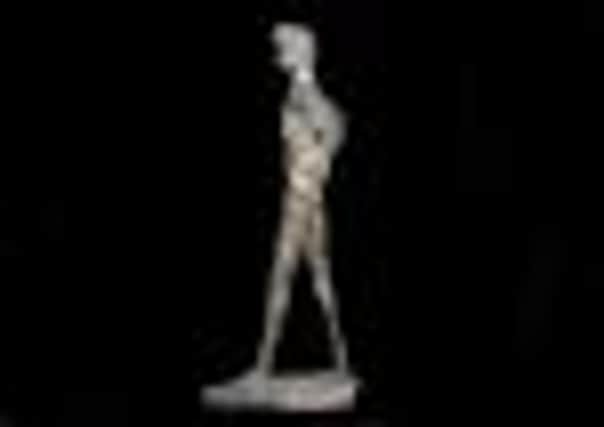How the Birdman flew into a new home


Leeds Art Gallery is renowned for having one of the most extensive collections of 20th century British sculpture on display in the UK, but until last summer it was missing a key work.
The Leeds Sculpture Collection is particularly strong in works from the 1950s and 60s and visitors can experience works by such impressive post-war sculptors as Kenneth Armitage, Eduardo Paolozzi, Austin Wright, Geoffrey Clarke, Lynn Chadwick, William Turnbull and Bernard Meadows, all of whom were contemporaries of Elisabeth Frink.
Advertisement
Hide AdAdvertisement
Hide AdHappily, last year the Art Fund was able to help plug this gap in the gallery’s collection by facilitating the gift of a life-size plaster maquette of her work Birdman to the gallery. Gifted by the Frink Estate and Beaux Arts, London, the piece was valued at £250,000 at the time.
Birdman, standing at 190cm tall, represents a half man, half bird figure. The male form, along with animals such as dogs, horses and birds, was a major theme for Frink which she returned to time and again throughout her career. The piece itself is distinctive for its spindly limbs and slight torso capturing the frail, vulnerable side of man.
Although we don’t know the precise inspiration for this piece, which is believed to date from 1958-9, it is thought Frink may have been captivated by a story in Paris-Match about the death of a real-life “birdman” Léo Valentin, who had fallen to earth while wearing wooden wings in an attempt to fly.
Her exploration of the idea of a “winged man” was also likely to have been influenced by a personal experience – a boyfriend of hers had been in the Air Force and was badly injured when his parachute failed to inflate.
Advertisement
Hide AdAdvertisement
Hide AdThe collection at Leeds has a special remit to represent the fundamentals of British sculpture allowing it to acquire models and maquettes as well as final works making it the ideal home for this piece where it can be appropriately cared for and displayed.
When Birdman was unveiled in Leeds, Frink’s son, Lin Jammet, who is the manager of her estate said: “It was very important to us to find a good home for the Birdman plaster, somewhere it would be seen by the public rather than just stuck in store awaiting display.
“It’s a really important piece because it gives you a sense of the speed and spontaneity with which my mother worked, showing how she’d model quickly in plaster, and then carve the form back.”
Jammet also has another theory about his mother’s inspiration for the piece: “With its embryonic wings the Birdman is the epitome of the way she saw man, as capable of great heroism – like her soldier father whom she worshipped – but also hugely vulnerable.”
Advertisement
Hide AdAdvertisement
Hide AdCommenting on the donors’ decision to gift the work through the Art Fund, Director Stephen Deuchar said: “We thank the Frink Estate and Beaux Arts for choosing to give Birdman through the Art Fund, and we encourage anyone – whether a gallerist or private collector – who might be donating a work of art to consider doing so through us. We work hard to ensure that each gift is placed in a public collection that will look after it well and present it to its best advantage.”
The Art Fund has helped to bring three other works by the artist into UK public collections. In 1998 the Art Fund gave Tate a grant towards the purchase of a bronze sculpture Dying King and in 2009 another bronze work, Chinese Horse III, was gifted through the Art Fund to the New Art Gallery Walsall.
PORTRAIT OF THE ARTIST
Born in Suffolk in 1930, Frink studied at Guildford School of Art and Chelsea in the 1940s and 50s.
She had her first major exhibition at the original Beaux Arts Gallery alongside the London Group in 1952 and Tate bought its first piece of her work when she was just 18. Other examples of her Bronze sculptures are on loan from the Frink Estate and can be seen at the Yorkshire Sculpture Park in Wakefield.
National Art Pass, receiving free entry to over 200 galleries and museums. Details at www.artfund.org/nationalartpass or on 0844 4154100.